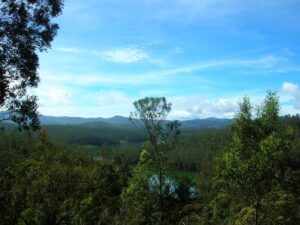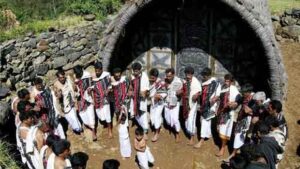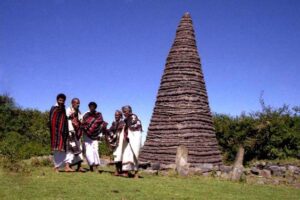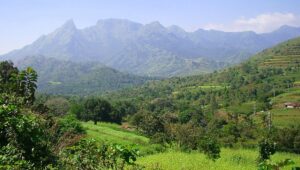
In India, respecting and worshipping all forms of nature is well known. Within the sphere of ecological tradition, trees and groves are protected with religious fervour. In fact, all kinds of landscapes are worshiped and this has economic and cultural connotations. Many mountains in various parts of the country are treated as sacred. Most of the mountains have some kind of temple structure along with a deity. Groves and trees are also protected and worshiped.
Many myths surround the mountains. In India, mountains served as natural fortresses and gave people a sense of security, both physical and spiritual. Many ethnic groups view mountains and hills as temples and places of worships, starting with the great Himalayas themselves. Edwin Andrew says, “Sacred Mountains also provide bridges of mutual understanding between cultures that can help to promote biodiversity”. A mountain is generally viewed as a source of water, life, healing and well-being, and a lifeline to all life forms.
In the southern peninsula of India, the Nilgiri Mountains were well preserved until the 1800s. Their inaccessibility had helped to preserve indigenous culture. Even now, a few parts of the Nilgiris are worshiped and viewed as sacred to the Toda tribe. Since the Todas are basically a pastoral community, they preserve the grasslands and sholas on the upper plateau of the Nilgiris.

Like the other indigenous communities (Irulas and Kurumbas) in the Nilgiris, Todas view mountains as temples and places of worship. Each and every hillock in the Nilgiris was associated with Toda worship. Todas believe that there is a very definite association between the gods and the hills of the Nilgiri plateau. Each god has his separate hillock where he dwells and every deity meets on a special hill where the Todas have their councils. Todas have a practice of gathering on one hill while performing rituals and dairy ceremonies (they are buffalo herders).

Every year, to respect their buffaloes, Todas gather on one hillock and pour salt water. The mountain, named Porhsthitt (near Thalaptheri Mundh) and located on the western portion of Nilgiris upper plateau, is worshiped by the Todas even today. Kolkin, the adjoining river (a tributary of the Pykara), is also worshiped. Toda men gather here once a year and take decisions about ritual events.

The hill Kotran Dekarsh (Malleaswaran hill) is located on the southern side of the Nilgiris, on the Attappady valley. This steep hill is associated with the Hindu deity Siva and is worshipped by the Todas. The river Bhavani flows at the foot of Malleaswaran hill and is also regarded as sacred by the Todas.

The Todas worshipped many mountains and hills before the advent of the British and other settlers. In spite of many modern changes, the Todas continue to give importance to the hillocks. There are two important reasons for worshipping the mountains. Firstly, the grassy hills are important for the buffaloes; secondly, the Todas strongly believe that the hills are the dwelling places of the gods.
Unplanned developmental activities and monoculture in the Nilgiris are the major threats to these mountain ecosystems. This is the time to take necessary action to protect the hills.


